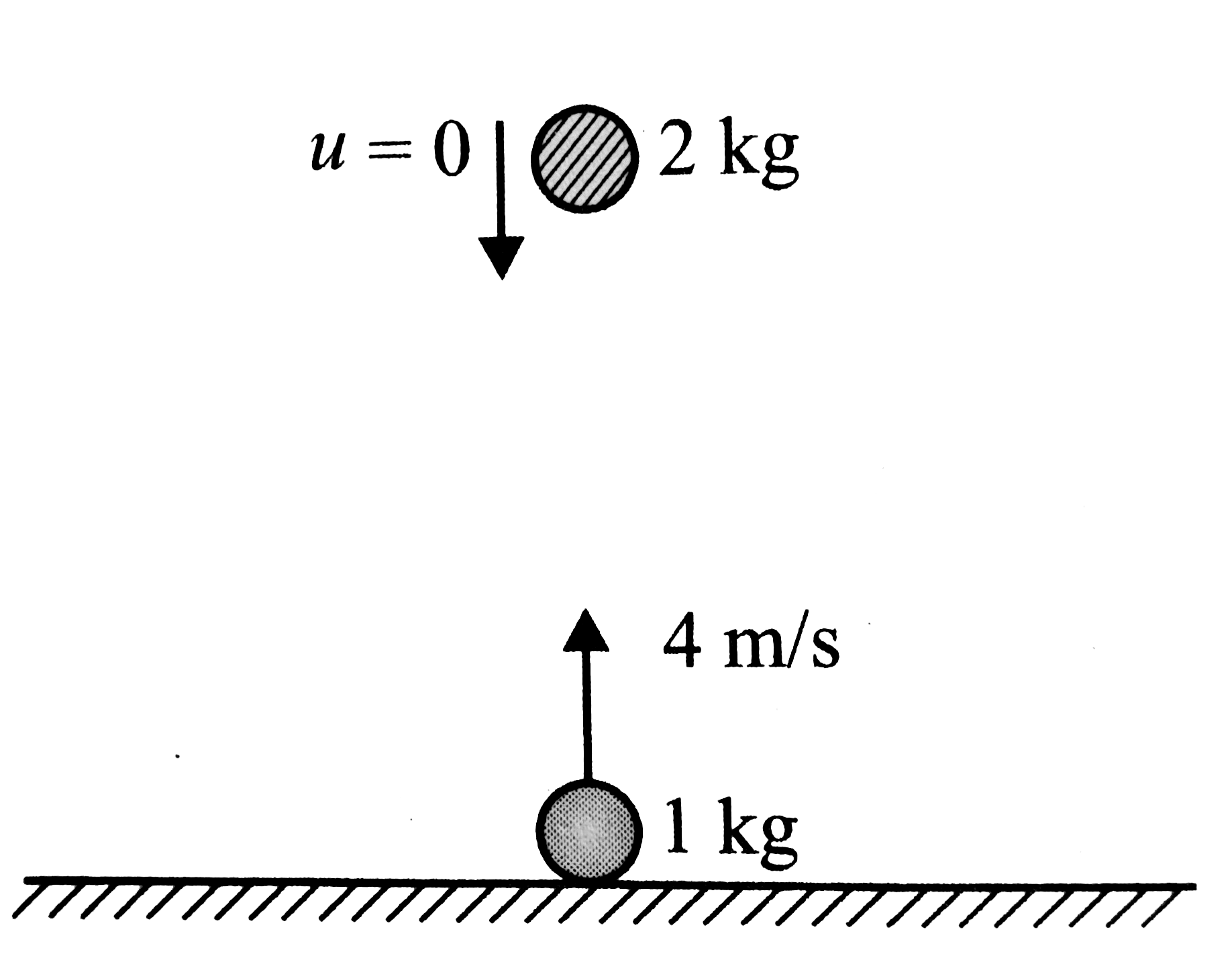A radioiostope X has a half-life of 10s. Find the number of nuclei in the sample (if initially there are 1000 isotopes which are falling from rest from a height of 3000m ) when it is at a height of 1000m from refrence plane.
50
250
29
100
The correct Answer is:b
To solve the problem step by step, we will follow these steps:
Step 1: Determine the distance fallen
The initial height from which the isotopes are falling is 3000 m, and we need to find the number of nuclei when they are at a height of 1000 m. Therefore, the distance fallen (s) is:
s=3000m−1000m=2000m
Hint: Calculate the distance fallen by subtracting the final height from the initial height.
Step 2: Calculate the time taken to fall 2000 m
Using the equation of motion for free fall:
s=ut+12at2
where u=0 (initial velocity), a=g (acceleration due to gravity, approximately 10m/s2), and s=2000m:
2000=0+12⋅10⋅t2
This simplifies to:
2000=5t2
Thus,
t2=20005=400⟹t=√400=20s
Hint: Use the equation of motion for objects in free fall to find the time taken to fall a certain distance.
Step 3: Determine the number of half-lives elapsed
The half-life of the isotope X is given as 10s. Since the time taken to fall 2000 m is 20s, we can find the number of half-lives that have passed:
Number of half-lives=Total timeHalf-life=20s10s=2
Hint: Divide the total time by the half-life to find how many half-lives have passed.
Step 4: Calculate the remaining number of nuclei
The initial number of nuclei N0 is 1000. After each half-life, the number of nuclei is halved. After 2 half-lives:
Nt=N0(12)n
where n is the number of half-lives. Thus:
Nt=1000(12)2=1000⋅14=250
Hint: Use the formula for radioactive decay to find the remaining quantity after a certain number of half-lives.
Final Answer
The number of nuclei remaining in the sample when it is at a height of 1000 m is 250.
---
The initial height from which the isotopes are falling is 3000 m, and we need to find the number of nuclei when they are at a height of 1000 m. Therefore, the distance fallen (s) is:
s=3000m−1000m=2000m
Using the equation of motion for free fall:
s=ut+12at2
where u=0 (initial velocity), a=g (acceleration due to gravity, approximately 10m/s2), and s=2000m:
2000=0+12⋅10⋅t2
This simplifies to:
2000=5t2
Thus,
t2=20005=400⟹t=√400=20s
The half-life of the isotope X is given as 10s. Since the time taken to fall 2000 m is 20s, we can find the number of half-lives that have passed:
Number of half-lives=Total timeHalf-life=20s10s=2
The initial number of nuclei N0 is 1000. After each half-life, the number of nuclei is halved. After 2 half-lives:
Nt=N0(12)n
where n is the number of half-lives. Thus:
Nt=1000(12)2=1000⋅14=250
The number of nuclei remaining in the sample when it is at a height of 1000 m is 250.
Topper's Solved these Questions
- NUCLEAR PHYSICSBook:CENGAGE PHYSICS ENGLISHChapter:NUCLEAR PHYSICSExercise:Linked Comprehension
Explore 29 Videos
- NUCLEAR PHYSICSBook:CENGAGE PHYSICS ENGLISHChapter:NUCLEAR PHYSICSExercise:Integer
Explore 6 Videos
- NUCLEAR PHYSICSBook:CENGAGE PHYSICS ENGLISHChapter:NUCLEAR PHYSICSExercise:Subjective
Explore 35 Videos
- MISCELLANEOUS VOLUME 5Book:CENGAGE PHYSICS ENGLISHChapter:MISCELLANEOUS VOLUME 5Exercise:Integer
Explore 12 Videos
- PHOTOELECTRIC EFFECTBook:CENGAGE PHYSICS ENGLISHChapter:PHOTOELECTRIC EFFECTExercise:Integer Type
Explore 4 Videos
Similar Questions
Knowledge Check
A radioactive isotope X has a half life of 3 seconds. At t=0, a given sample of this isotope contains 8000 atom. Calculate (i) its decay constant (ii) average life (iii) the time t1, when 1000 atoms of the isotope X remain in the sample (iv) number of decay/sec in the sample at t=t1sec.
A2sB4sC7sD9s
A sample which has half life of 1033 year . If initial number of nuclei of the sample is 26×1024. Then find out of the number of nuclei decayed in 1 year.
View SolutionA ball is dropped onto a floor from a height of 10m. If 20% of its initial energy is lost,then the height of bounce is
View SolutionIf body travels half of its path in the last second of its fall from rest, find the time and height of its fall.
View SolutionFind the average velocity of a particle released from rest from a height of 125m over a time interval till it strikes the ground. Take g=10m/s2.
View SolutionA radioactive sample S1 having an activity of 5μCi has twice the number of nuclei as another sample S2 which has an activity of 10μCi. The half-lives of S1 and S2 can be
View SolutionA cracker is thrown into air with a velocity of 10m/s at an angle of 45∘ with the vertical. When it is at a height of 0.5m from the ground, it explodes into a number of pieces which follow different parabolic paths. What is the velocity of centre of mass, when it is at a height of 1m from the ground? (g=10m/s2)
View SolutionA ball of mass 1kg is thrown up with an initial speed of 4m/s. A second ball of mass 2kg is released from rest from some height as shown in Fig. Choose the correct statement (s).

View Solution
